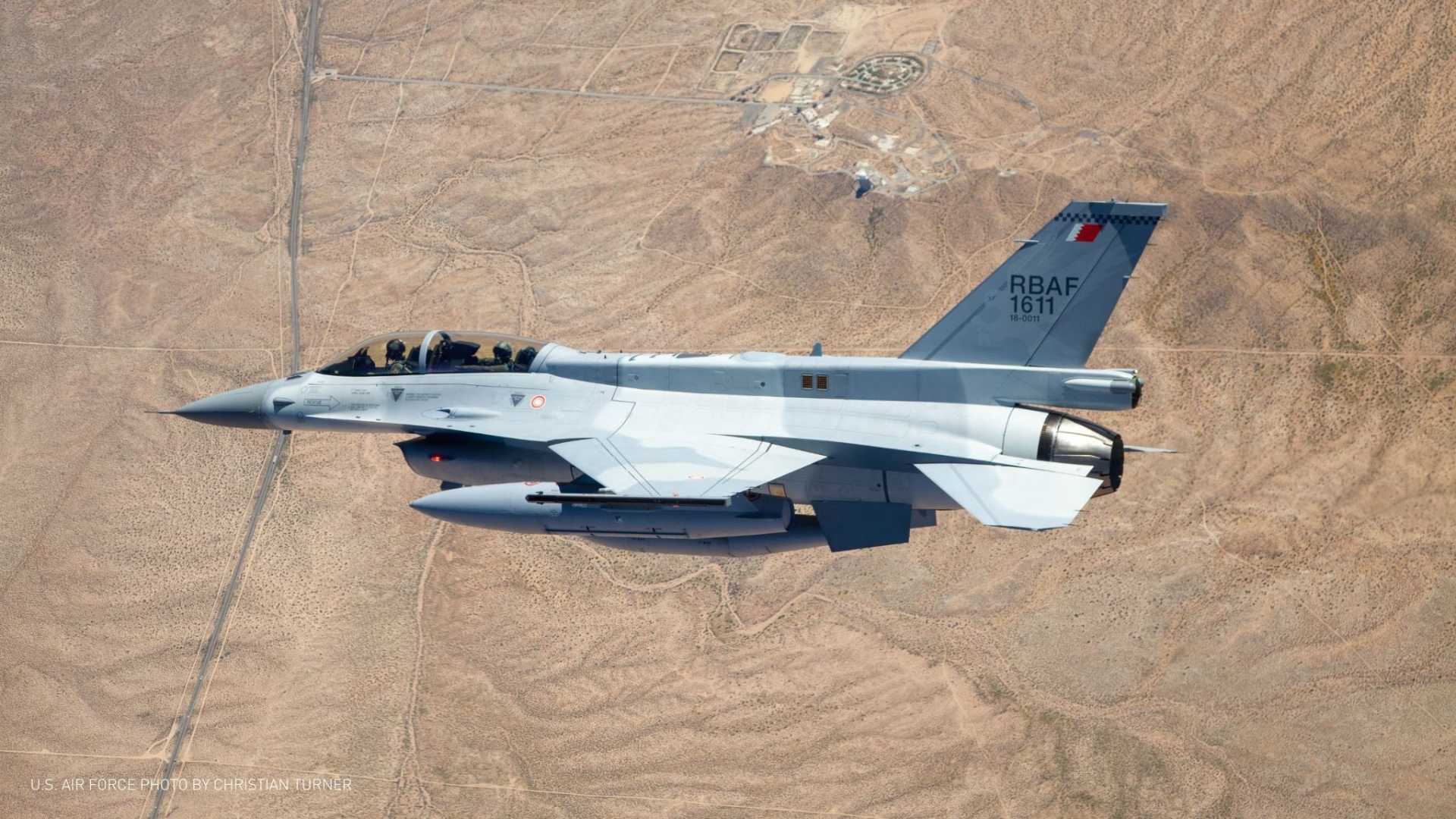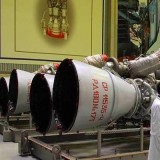Philippines to receive 20 F-16 Block 70/72 fighter jets from the US as confrontations with China grow

{loadposition bannertop}
{loadposition sidebarpub}
On April 1, 2025, the U.S. State Department announced the approval of a possible Foreign Military Sale (FMS) to the Philippines for twenty F-16 Block 70/72 fighter jets and associated weapons, equipment, and support systems, valued at an estimated $5.58 billion. The Defense Security Cooperation Agency (DSCA) delivered the necessary certification to Congress, opening a 30-day window during which lawmakers may review the proposed deal, although such sales are rarely blocked. The approval follows heightened U.S.-Philippine defense engagement and comes amid regional tensions in the South China Sea and Taiwan Strait.Follow Army Recognition on Google News at this link
The F-16 Block 70/72 Fighting Falcon features the proven APG-83 AESA radar, which offers enhanced situational awareness with capabilities comparable to those of fifth-generation fighter radars. (Picture source: Edwards Air Force Base)
The timing of this approval is significant as the Philippines has been engaged in a series of escalating maritime confrontations with China over disputed territories in the South China Sea. U.S. officials, including Secretary of State Marco Rubio and Defense Secretary Pete Hegseth, have increasingly voiced support for Manila in countering Chinese maritime expansion. During his recent visit, Hegseth committed to “reestablish deterrence in the Indo-Pacific region,” calling attention to China’s growing assertiveness. Additionally, Philippine military leadership, including General Romeo Brawner, has publicly stated that a conflict in Taiwan would inevitably involve the Philippines, urging preparations for possible hostilities. Preparations for such scenarios have reportedly influenced the planning of joint U.S.-Philippine exercises, such as the annual “Balikatan” drills. These developments add urgency to the Philippine modernization program, of which the F-16 acquisition is a cornerstone.
The Philippines government has not received official notification beyond the DSCA release. Department of National Defense (DND) spokesperson Arsenio Andolong stated that no formal notice had been received. Armed Forces of the Philippines (AFP) spokesperson Col. Francel Margareth Padilla commented that the institution supports any capability that contributes to modernization but deferred official statements to the DND. Philippine Air Force spokesperson Col. Ma. Consuelo Castillo indicated that the PAF would only issue statements about assets once they have been formally delivered. The Philippine government has previously expressed interest in acquiring F-16s, including during earlier modernization phases and defense dialogues with the United States.
The Philippine Air Force (PAF) has been seeking to purchase the F-16 C/D since the early 1990s. In 1995, the aircraft was one of several international competitors considered in a multirole fighter acquisition program that was later cancelled due to the 1997 Asian financial crisis. In 2011, the Philippine government requested refurbished F-16s from the United States, specifically Block 25 or 30 units upgraded to Block 50/52 standard. The proposal, discussed in the 2012 U.S.-Philippines “2+2” Ministerial Dialogue, included maintenance and pilot training. However, high operating and refurbishment costs led to a shift in focus toward advanced jet trainers. By 2018, plans were revived for acquiring multirole fighters. In June 2021, the U.S. approved a separate proposal for the sale of 12 F-16 Block 70/72 aircraft to the Philippines, which ultimately did not proceed. The current FMS represents a continuation of efforts that span over three decades, allowing the PAF to enhance the country’s air defense, maritime domain awareness, and suppression of enemy air defense (SEAD) capacities.
A conflict for Taiwan would inevitably involve the Philippines, urging preparations for possible hostilities. Preparations for such scenarios have reportedly influenced the planning of joint U.S.-Philippine exercises, such as the annual “Balikatan” drills. (Picture source: US DoD)
The proposed sale to the Philippines includes sixteen single-seat F-16C and four dual-seat F-16D Block 70/72 fighter jets, collectively known as the F-16V variant. These aircraft will be powered by either General Electric F110-GE-129D or Pratt & Whitney F100-PW-229 engines, with a total of twenty-four engines (twenty installed and four spares) being part of the deal. Alongside the aircraft, the Philippines would receive twenty-two AN/APG-83 AESA SABR radars, twenty-two Improved Programmable Display Generators (iPDG), and Modular Mission Computers 7000AH. Other systems include embedded GPS/INS units with M-Code or SAASM, twenty-two M61A1 20mm cannons, Sniper Advanced Targeting Pods, Multifunctional Information Distribution System-Joint Tactical Radio Systems (MIDS-JTRS), and a wide array of munitions.
Munitions in the package include 112 AIM-120C-8 Advanced Medium Range Air-to-Air Missiles (AMRAAMs), 36 GBU-39/B Small Diameter Bombs (SDB-1), 40 AIM-9X Block II Sidewinder missiles, 60 MK-82 500-lb and 60 MK-84 2,000-lb general-purpose bombs, Enhanced Paveway II components, Joint Direct Attack Munition (JDAM) with associated tail kits, fuze systems, and other ordnance and support equipment, as well as a series of other items like electronic warfare systems like AN/ALQ-254 Viper Shield, chaff and flare systems, cryptographic devices, and training and simulation equipment.
The Block 70/72 variant, often referred to as the F-16V, represents the most advanced configuration of the F-16 multirole fighter. Developed by Lockheed Martin, it integrates all major advancements made to the platform over the last two and a half decades. Initially proposed in 2012, the variant was first offered as an upgrade package for Taiwan’s aging F-16 fleet and later saw new-build orders beginning with Bahrain in 2017. Since then, several other nations—including Greece, South Korea, Slovakia, Bulgaria, Morocco, Jordan, and Turkey—have pursued either newly built models or retrofit upgrade kits for their existing fleets. Production of the upgrade kits began in 2019, with deliveries to Taiwan, South Korea, and Greece, while the first newly built Block 70 for Bahrain took flight in January 2023. With over 450 upgrade kits ordered by various countries and additional new-build orders pending from Bahrain, Slovakia, Bulgaria, Taiwan, and Jordan, the Block 70/72 is poised to remain operational for decades, with an extended structural service life of 12,000 hours that promises at least 40 years of service without the need for extensive structural repairs.
Strategically, the introduction of the F-16 in 1978 has been pivotal in enhancing the air capabilities of numerous nations, as the global F-16 fleet is estimated to have accumulated between 16 and 17 million flight hours. (Picture source: US DoD)
The F-16 Block 70/72 Fighting Falcon features the proven APG-83 AESA radar, which offers enhanced situational awareness with capabilities comparable to those of fifth-generation fighter radars. The radar provides pilots with detailed target imagery, digital mapping features with zoom and slew functionalities, and multiple target tracking in dense electromagnetic environments. Complementing this advanced radar is a modernized cockpit featuring a new high-resolution Center Pedestal Display, which facilitates critical tactical imagery and data integration from both onboard and external targeting systems. Additional features include a modern mission computer, an Automatic Ground Collision Avoidance System (Auto GCAS) designed to reduce controlled flight into terrain incidents, an advanced ejection seat system, and an infrared search and track (IRST) system that improves the detection and tracking of airborne targets.
A key survivability feature is the Automatic Ground Collision Avoidance System (Auto GCAS), which has already saved lives in U.S. Air Force service. The cockpit has been further modernized with a Martin-Baker US18E ejection seat, IRST sensors, and digital intercommunication systems with 3D audio. Structural improvements extend the service life to 12,000 flight hours, which is over 50 percent longer than older production F-16s, ensuring a useful service life up to and beyond the 2060s. Conformal fuel tanks increase range without degrading aerodynamic performance.
The F-16 Block 70/72 supports over 180 weapon types and more than 3,300 certified configurations, enabling a wide variety of mission profiles. Its combat performance includes a maximum speed exceeding Mach 2 (approximately 2,470 km/h), a tactical radius of 580 km in hi-lo-hi profile with internal fuel and external stores, and a ferry range up to 3,940 km with drop tanks. The aircraft is capable of withstanding load factors up to 9g, with a maximum takeoff weight of 21,772 kg. Powered by either the Pratt & Whitney F100-PW-229EEP or General Electric F110-GE-129 turbofan, each capable of delivering roughly 129 kN (29,000 lb) of thrust, the fighter remains highly maneuverable and combat-reliable across multiple mission sets.
The economic and strategic impacts of the F-16 fighter jet extend well beyond its technical merits. Since its introduction in 1978, in the United States alone, the program supports over 46,000 jobs directly and indirectly, with a significant economic impact in states like South Carolina where more than 500 suppliers contribute to the production process. For instance, Lockheed Martin’s facility in Greenville, South Carolina, has become a hub for F-16 manufacturing, with plans to increase production to 48 aircraft per year by the end of 2025. This surge in production necessitates a skilled workforce, leading to numerous job openings in roles such as production supervision, avionics technicians, and aircraft mechanics. Globally, the F-16 has engaged 28 international suppliers and generated approximately 55,000 jobs, with an estimated worldwide economic impact of $7.5 billion. The integration of over 500 suppliers worldwide further exemplifies the extensive industrial and technological collaborations underpinning the program. Strategically, the F-16 has been pivotal in enhancing the air capabilities of numerous nations, as the global F-16 fleet is estimated to have accumulated between 16 and 17 million flight hours. Individual pilots have achieved notable milestones; for example, as of 2014, Commander Marc “CharlZ” Longle of the Belgian Air Force surpassed 4,000 flight hours in the F-16.

{loadposition bannertop}
{loadposition sidebarpub}
On April 1, 2025, the U.S. State Department announced the approval of a possible Foreign Military Sale (FMS) to the Philippines for twenty F-16 Block 70/72 fighter jets and associated weapons, equipment, and support systems, valued at an estimated $5.58 billion. The Defense Security Cooperation Agency (DSCA) delivered the necessary certification to Congress, opening a 30-day window during which lawmakers may review the proposed deal, although such sales are rarely blocked. The approval follows heightened U.S.-Philippine defense engagement and comes amid regional tensions in the South China Sea and Taiwan Strait.
Follow Army Recognition on Google News at this link
The F-16 Block 70/72 Fighting Falcon features the proven APG-83 AESA radar, which offers enhanced situational awareness with capabilities comparable to those of fifth-generation fighter radars. (Picture source: Edwards Air Force Base)
The timing of this approval is significant as the Philippines has been engaged in a series of escalating maritime confrontations with China over disputed territories in the South China Sea. U.S. officials, including Secretary of State Marco Rubio and Defense Secretary Pete Hegseth, have increasingly voiced support for Manila in countering Chinese maritime expansion. During his recent visit, Hegseth committed to “reestablish deterrence in the Indo-Pacific region,” calling attention to China’s growing assertiveness. Additionally, Philippine military leadership, including General Romeo Brawner, has publicly stated that a conflict in Taiwan would inevitably involve the Philippines, urging preparations for possible hostilities. Preparations for such scenarios have reportedly influenced the planning of joint U.S.-Philippine exercises, such as the annual “Balikatan” drills. These developments add urgency to the Philippine modernization program, of which the F-16 acquisition is a cornerstone.
The Philippines government has not received official notification beyond the DSCA release. Department of National Defense (DND) spokesperson Arsenio Andolong stated that no formal notice had been received. Armed Forces of the Philippines (AFP) spokesperson Col. Francel Margareth Padilla commented that the institution supports any capability that contributes to modernization but deferred official statements to the DND. Philippine Air Force spokesperson Col. Ma. Consuelo Castillo indicated that the PAF would only issue statements about assets once they have been formally delivered. The Philippine government has previously expressed interest in acquiring F-16s, including during earlier modernization phases and defense dialogues with the United States.
The Philippine Air Force (PAF) has been seeking to purchase the F-16 C/D since the early 1990s. In 1995, the aircraft was one of several international competitors considered in a multirole fighter acquisition program that was later cancelled due to the 1997 Asian financial crisis. In 2011, the Philippine government requested refurbished F-16s from the United States, specifically Block 25 or 30 units upgraded to Block 50/52 standard. The proposal, discussed in the 2012 U.S.-Philippines “2+2” Ministerial Dialogue, included maintenance and pilot training. However, high operating and refurbishment costs led to a shift in focus toward advanced jet trainers. By 2018, plans were revived for acquiring multirole fighters. In June 2021, the U.S. approved a separate proposal for the sale of 12 F-16 Block 70/72 aircraft to the Philippines, which ultimately did not proceed. The current FMS represents a continuation of efforts that span over three decades, allowing the PAF to enhance the country’s air defense, maritime domain awareness, and suppression of enemy air defense (SEAD) capacities.

A conflict for Taiwan would inevitably involve the Philippines, urging preparations for possible hostilities. Preparations for such scenarios have reportedly influenced the planning of joint U.S.-Philippine exercises, such as the annual “Balikatan” drills. (Picture source: US DoD)
The proposed sale to the Philippines includes sixteen single-seat F-16C and four dual-seat F-16D Block 70/72 fighter jets, collectively known as the F-16V variant. These aircraft will be powered by either General Electric F110-GE-129D or Pratt & Whitney F100-PW-229 engines, with a total of twenty-four engines (twenty installed and four spares) being part of the deal. Alongside the aircraft, the Philippines would receive twenty-two AN/APG-83 AESA SABR radars, twenty-two Improved Programmable Display Generators (iPDG), and Modular Mission Computers 7000AH. Other systems include embedded GPS/INS units with M-Code or SAASM, twenty-two M61A1 20mm cannons, Sniper Advanced Targeting Pods, Multifunctional Information Distribution System-Joint Tactical Radio Systems (MIDS-JTRS), and a wide array of munitions.
Munitions in the package include 112 AIM-120C-8 Advanced Medium Range Air-to-Air Missiles (AMRAAMs), 36 GBU-39/B Small Diameter Bombs (SDB-1), 40 AIM-9X Block II Sidewinder missiles, 60 MK-82 500-lb and 60 MK-84 2,000-lb general-purpose bombs, Enhanced Paveway II components, Joint Direct Attack Munition (JDAM) with associated tail kits, fuze systems, and other ordnance and support equipment, as well as a series of other items like electronic warfare systems like AN/ALQ-254 Viper Shield, chaff and flare systems, cryptographic devices, and training and simulation equipment.
The Block 70/72 variant, often referred to as the F-16V, represents the most advanced configuration of the F-16 multirole fighter. Developed by Lockheed Martin, it integrates all major advancements made to the platform over the last two and a half decades. Initially proposed in 2012, the variant was first offered as an upgrade package for Taiwan’s aging F-16 fleet and later saw new-build orders beginning with Bahrain in 2017. Since then, several other nations—including Greece, South Korea, Slovakia, Bulgaria, Morocco, Jordan, and Turkey—have pursued either newly built models or retrofit upgrade kits for their existing fleets. Production of the upgrade kits began in 2019, with deliveries to Taiwan, South Korea, and Greece, while the first newly built Block 70 for Bahrain took flight in January 2023. With over 450 upgrade kits ordered by various countries and additional new-build orders pending from Bahrain, Slovakia, Bulgaria, Taiwan, and Jordan, the Block 70/72 is poised to remain operational for decades, with an extended structural service life of 12,000 hours that promises at least 40 years of service without the need for extensive structural repairs.

Strategically, the introduction of the F-16 in 1978 has been pivotal in enhancing the air capabilities of numerous nations, as the global F-16 fleet is estimated to have accumulated between 16 and 17 million flight hours. (Picture source: US DoD)
The F-16 Block 70/72 Fighting Falcon features the proven APG-83 AESA radar, which offers enhanced situational awareness with capabilities comparable to those of fifth-generation fighter radars. The radar provides pilots with detailed target imagery, digital mapping features with zoom and slew functionalities, and multiple target tracking in dense electromagnetic environments. Complementing this advanced radar is a modernized cockpit featuring a new high-resolution Center Pedestal Display, which facilitates critical tactical imagery and data integration from both onboard and external targeting systems. Additional features include a modern mission computer, an Automatic Ground Collision Avoidance System (Auto GCAS) designed to reduce controlled flight into terrain incidents, an advanced ejection seat system, and an infrared search and track (IRST) system that improves the detection and tracking of airborne targets.
A key survivability feature is the Automatic Ground Collision Avoidance System (Auto GCAS), which has already saved lives in U.S. Air Force service. The cockpit has been further modernized with a Martin-Baker US18E ejection seat, IRST sensors, and digital intercommunication systems with 3D audio. Structural improvements extend the service life to 12,000 flight hours, which is over 50 percent longer than older production F-16s, ensuring a useful service life up to and beyond the 2060s. Conformal fuel tanks increase range without degrading aerodynamic performance.
The F-16 Block 70/72 supports over 180 weapon types and more than 3,300 certified configurations, enabling a wide variety of mission profiles. Its combat performance includes a maximum speed exceeding Mach 2 (approximately 2,470 km/h), a tactical radius of 580 km in hi-lo-hi profile with internal fuel and external stores, and a ferry range up to 3,940 km with drop tanks. The aircraft is capable of withstanding load factors up to 9g, with a maximum takeoff weight of 21,772 kg. Powered by either the Pratt & Whitney F100-PW-229EEP or General Electric F110-GE-129 turbofan, each capable of delivering roughly 129 kN (29,000 lb) of thrust, the fighter remains highly maneuverable and combat-reliable across multiple mission sets.
The economic and strategic impacts of the F-16 fighter jet extend well beyond its technical merits. Since its introduction in 1978, in the United States alone, the program supports over 46,000 jobs directly and indirectly, with a significant economic impact in states like South Carolina where more than 500 suppliers contribute to the production process. For instance, Lockheed Martin’s facility in Greenville, South Carolina, has become a hub for F-16 manufacturing, with plans to increase production to 48 aircraft per year by the end of 2025. This surge in production necessitates a skilled workforce, leading to numerous job openings in roles such as production supervision, avionics technicians, and aircraft mechanics. Globally, the F-16 has engaged 28 international suppliers and generated approximately 55,000 jobs, with an estimated worldwide economic impact of $7.5 billion. The integration of over 500 suppliers worldwide further exemplifies the extensive industrial and technological collaborations underpinning the program. Strategically, the F-16 has been pivotal in enhancing the air capabilities of numerous nations, as the global F-16 fleet is estimated to have accumulated between 16 and 17 million flight hours. Individual pilots have achieved notable milestones; for example, as of 2014, Commander Marc “CharlZ” Longle of the Belgian Air Force surpassed 4,000 flight hours in the F-16.






